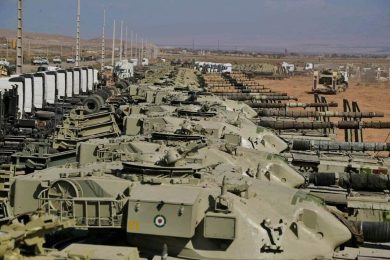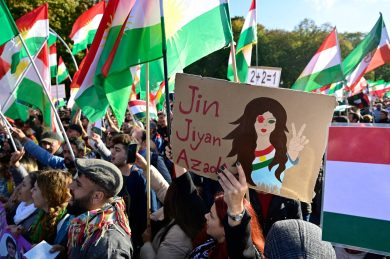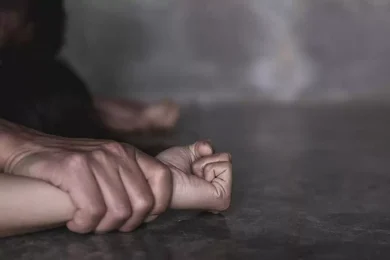In the Islamic Republic of Iran, a woman who dares to lead, speak, or protest becomes a target. For decades, Iranian women have been at the forefront of calls for freedom, democracy, and gender equality. And for just as long, the Islamic Revolutionary Guard Corps (IRGC)—the regime’s powerful ideological military arm—has worked systematically to silence them.
But while the IRGC has succeeded in imprisoning, intimidating, and exiling many of these women, it has failed to break them. Across cities, prison cells, and digital platforms, Iranian women leaders continue to rise, transforming oppression into a catalyst for change.
The IRGC: A Tool of Political and Gender-Based Repression
The IRGC is not merely a military force—it is a core pillar of Iran’s authoritarian regime, wielding massive influence over intelligence, media, judiciary, and the economy. Its mission is to preserve the Islamic Republic’s ideology, often by any means necessary.
When women speak out—whether against the compulsory hijab, political repression, or economic inequality—the IRGC acts swiftly:
• Arrests and detentions without fair trial
• Solitary confinement in notorious prisons like Evin and Qarchak
• Psychological and physical torture
• Public smearing through forced confessions and state propaganda
For women in leadership roles—activists, journalists, lawyers, and organizers—the price of visibility is dangerously high.
1. Targeted Tactics: Silencing Through Fear
1. Arbitrary Arrests and Fabricated Charges
Many women have been arrested without cause and sentenced under vague national security charges such as:
• “Propaganda against the state”
• “Collaboration with foreign media”
• “Acting against Islamic values”
Often, the real “crime” is public dissent—speaking out against injustice, or refusing to wear a hijab.
2. Torture, Interrogation, and Forced Confessions
Detainees report being subjected to:
• Sexual violence
• Sleep deprivation
• Beatings and solitary confinement
• Threats against family members
Their coerced “confessions” are aired on state TV to demonize dissenters and deter others from joining the resistance.
3. Digital Surveillance and Harassment
Women leaders are routinely monitored online. The IRGC’s cyber unit hacks accounts, surveils communications, and uses intimidation tactics—even sending death threats via anonymous messages.
4. Exile and Targeting Abroad
Activists who flee Iran often remain under threat. The IRGC has been involved in kidnap plots and assassination attempts against prominent women abroad—including journalists and campaigners.
2. Profiles in Courage: Women Who Refuse to Be Silenced
Narges Mohammadi – Nobel Peace Prize Winner 2023
A human rights advocate and journalist, Narges has spent years in prison for speaking out against torture, executions, and the compulsory hijab. She remains incarcerated and continues to publish reports from inside Evin Prison, becoming a global symbol of resilience.
Nasrin Sotoudeh – Human Rights Lawyer
Known for defending women arrested for protesting hijab laws, Nasrin has been sentenced to decades in prison and lashes. Despite severe health issues and incarceration, she has refused to back down.
Sepideh Gholian – Journalist and Labor Activist
After being tortured in custody and forced into a televised confession, Sepideh returned to activism immediately after release. She was arrested again for chanting anti-regime slogans outside prison.
Masih Alinejad – Exiled Journalist and Global Campaigner
Living in exile, Masih launched the #MyStealthyFreedom campaign, empowering Iranian women to protest forced veiling. The IRGC plotted her kidnapping in 2021—an attempt thwarted by the FBI.
3. A Systematic War on Women’s Leadership
What unites these cases is not just the suffering endured, but the regime’s clear fear of female leadership. The IRGC’s violence aims to:
• Break the spirit of activists
• Discourage others from following their path
• Maintain gender-based control over society
But the result has been the opposite. These women have inspired millions, creating a new generation of leaders in schools, workplaces, and streets across Iran.
4. Inside the Prisons: Tools of Suppression, Spaces of Resistance
Evin and Qarchak prisons are infamous for:
• Denial of medical care
• Overcrowding and poor hygiene
• Sexual harassment by male guards
• Torture and psychological pressure
Yet these prisons have also become spaces where women form networks of solidarity, hold reading circles, and support one another emotionally and politically. Even in confinement, they resist.
5. Why the IRGC Targets Women Specifically
In a regime founded on patriarchal values, women’s defiance threatens the ideological core. Women who:
• Uncover truth
• Demand legal rights
• Challenge forced veiling
• Call for democracy
…are seen as existential threats.
The IRGC’s crackdown on women is not incidental—it is strategic, and it reflects how gender equality is revolutionary in Iran’s political context.
6. The Global Response: Not Enough
While there have been statements of concern from international bodies, action remains inadequate. Many governments continue to negotiate with the Islamic Republic while ignoring its treatment of women.
What needs to happen:
• Designation of the IRGC as a terrorist organization by more countries
• Targeted sanctions against commanders involved in repression
• International legal mechanisms to document and prosecute crimes against women
• Safe asylum pathways for women fleeing persecution
• Amplification of imprisoned and exiled women’s voices in global media
7. A Movement Bigger Than Borders
The “Women, Life, Freedom” movement has unified Iranians of all ages, genders, and backgrounds. It has also resonated globally—sparking protests in cities around the world.
Iranian women are not just fighting for themselves—they are demanding universal human rights: dignity, agency, equality, and freedom.
Despite arrests and exile, these women continue to lead. They are silenced again and again, but they are never broken.
Conclusion: The Fight Will Continue
The IRGC has made it its mission to crush women’s leadership, but the spirit of resistance is stronger than their tactics of fear. Iranian women leaders have shown the world what true courage looks like.
They may be silenced temporarily, but their stories, their bravery, and their vision for a free Iran continue to inspire the world.
Join Our Newsletter!
Stay informed with the latest updates, news, and ways to take action in the fight for justice and global security. Sign up now to get updates delivered straight to your inbox!





